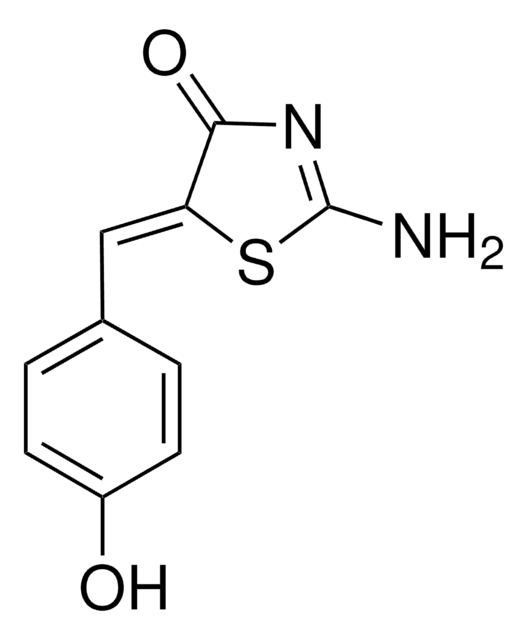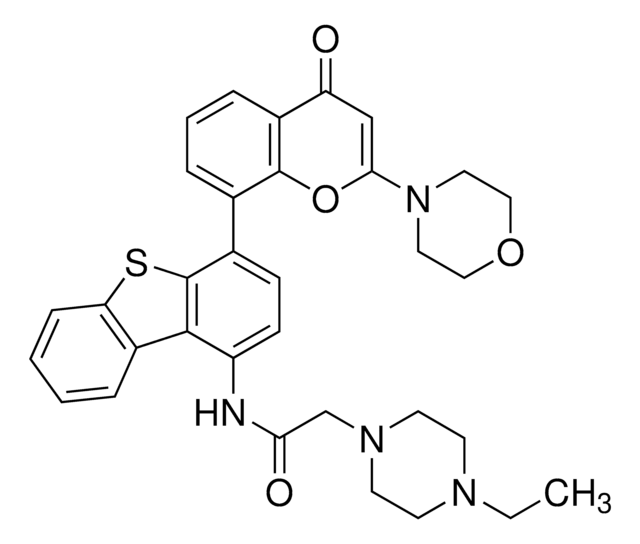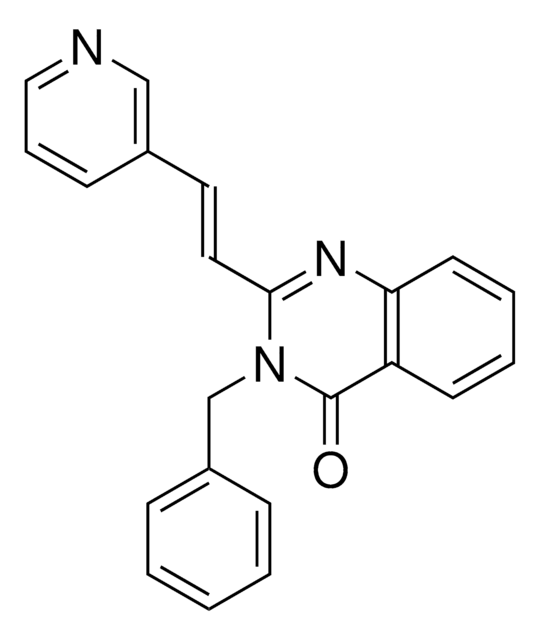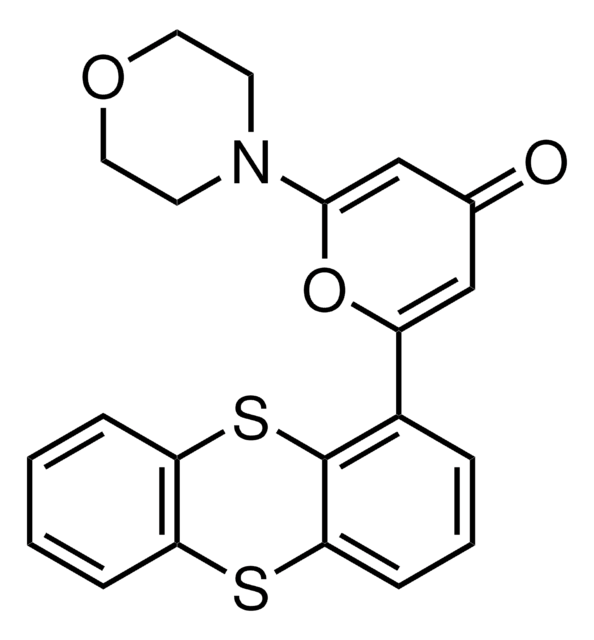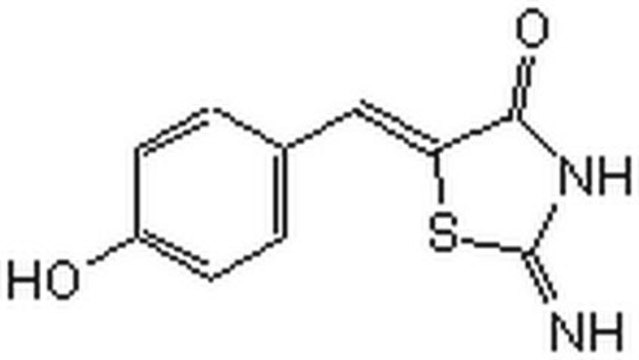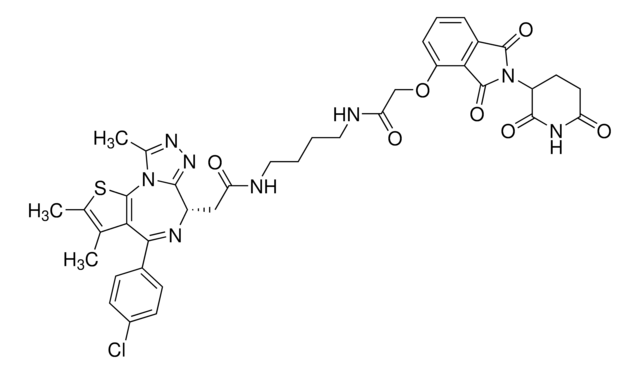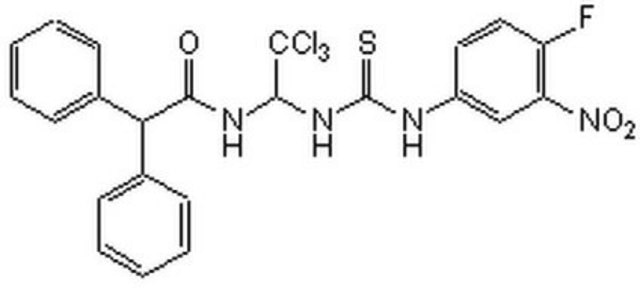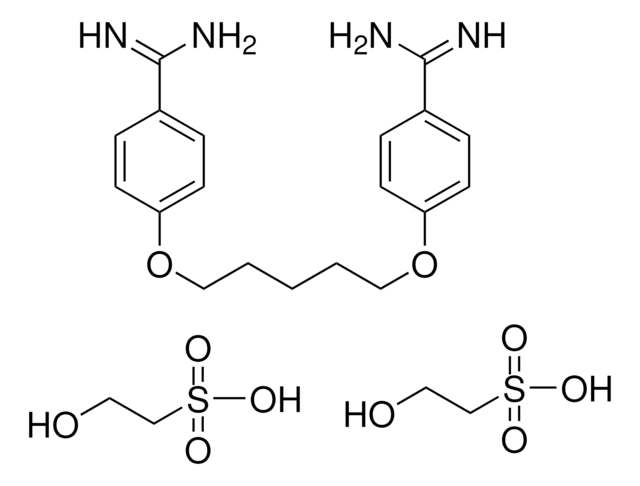SML1839
PFM39
≥98% (HPLC)
Synonym(s):
(5Z)-2-Amino-5-[(4-aminophenyl)methylene]-4(5H)-thiazolone, 5-(4-Aminobenzylidene)-2-iminothiazolidin-4-one
Sign Into View Organizational & Contract Pricing
All Photos(1)
About This Item
Empirical Formula (Hill Notation):
C10H9N3OS
CAS Number:
Molecular Weight:
219.26
UNSPSC Code:
12352200
Recommended Products
Quality Level
assay
≥98% (HPLC)
form
powder
color
yellow to orange
solubility
DMSO: 15 mg/mL, clear
storage temp.
2-8°C
SMILES string
NC1=CC=C(/C=C2SC(NC\2=O)=N)C=C1
Biochem/physiol Actions
PFM39 is a potent cell-permeable Mirin analog that selectively inhibits MRE11 exo-, but not endo-, nuclease activity. PFM39 targets MRE11 in a fashion similar to Mirin, but distinct from that of PFM01 to allow a blockage of dsDNA phosphate backbone rotation and selective inhibition against MRE11 exo-, but not endo-, nuclease activity. FM39 potently impairs G2-phase double-strand break (DSB) repair in 1BR3-hTERT fibrolasts following ionizing irradiation (IR).
signalword
Warning
hcodes
Hazard Classifications
Eye Irrit. 2
Storage Class
11 - Combustible Solids
wgk_germany
WGK 3
flash_point_f
Not applicable
flash_point_c
Not applicable
Certificates of Analysis (COA)
Search for Certificates of Analysis (COA) by entering the products Lot/Batch Number. Lot and Batch Numbers can be found on a product’s label following the words ‘Lot’ or ‘Batch’.
Already Own This Product?
Find documentation for the products that you have recently purchased in the Document Library.
Ronan Broderick et al.
Nature cell biology, 18(3), 271-280 (2016-01-26)
Repair of DNA double-strand breaks (DSBs) by homologous recombination (HR) is critical for survival and genome stability of individual cells and organisms, but also contributes to the genetic diversity of species. A vital step in HR is MRN-CtIP-dependent end resection
Atsushi Shibata et al.
Molecular cell, 53(1), 7-18 (2013-12-10)
MRE11 within the MRE11-RAD50-NBS1 (MRN) complex acts in DNA double-strand break repair (DSBR), detection, and signaling; yet, how its endo- and exonuclease activities regulate DSBR by nonhomologous end-joining (NHEJ) versus homologous recombination (HR) remains enigmatic. Here, we employed structure-based design
Our team of scientists has experience in all areas of research including Life Science, Material Science, Chemical Synthesis, Chromatography, Analytical and many others.
Contact Technical Service